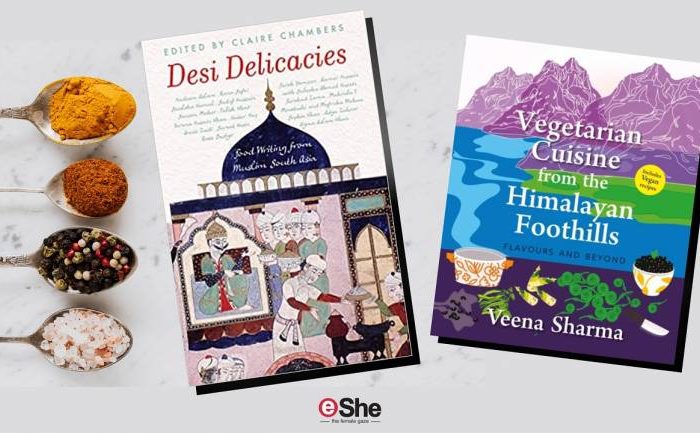Its been a year of lockdowns and home-cooked meals, however amateur they may be. And so its only apt that 2020 ends with two exemplary pieces of food writing to satisfy our culinary fantasies. If you are a foodie like me, these amazing books featuring recipes that tingle your senses and mouth-watering images are a delight to begin the new year with.
Vegetarian Cuisine from the Himalayan Foothills: Flavours and Beyond (Niyogi Books, Rs 750) by Veena Sharma includes recipes and nuggets of knowledge about the Garhwal region of the Himalayan foothills and its biodiversity. The recipes are extremely delicious, nutritious, flavourful and designed to promote physical and mental wellbeing. There are even vegan and gluten-free recipes to try.
The recipes not only tempt you through the books 150 beautifully shot photographs but are extremely tasty once prepared! From legumes, vegetables, wheat dishes, vegan delights, soups, chutneys, seeds and herbs to delicious after-food drinks, youll never find vegetarian cooking boring after trying and tasting the recipes in this book.
Along with each recipe, Dr Sharma who is a scholar and educator specialising in foreign affairs and also has an interest in Vedanta and womens issues has talked about the importance of the ingredients and why theyre beneficial for our health. The recipes vary from baked savouries for cravings such as oatmeal and finger-millet cookies; finger millet and wheat flour halwa, to breakfast foods like pumpkin pancakes and accompaniments like spicy carrot yogurt; roasted yellow pumpkin soup; and dried date and fenugreek chutney.
I was especially intrigued by the Indian gooseberry and apple chutney; the rice pudding with sugarcane juice; the almost malpua; and the phony gulaab jamun, which promote a nutritious and sustainable lifestyle. The combinations of ingredients will satisfy the mind and body equally.
Another remarkable book is Desi Delicacies: Food Writing from Muslim South Asia (Picador India, Rs 450) edited by Claire Chambers. The anthology includes fascinating essays by writers such as Nadeem Aslam, Rana Safvi, Sadaf Hussain, Tabish Khair, Tarana Husain Khan, Sanam Maher, Annie Zaidi, Uzma Aslam Khan and several more.
Desi Delicacies talks all about the preparation, cooking and serving of food in the Muslim communities of South Asia. It includes intriguing stories that give us a taste of the rituals, folklore, superstition and even occult arts that lie behind the food traditions of this region.
Many of us can identify with the historical and ancestral recipes that have made their way into all Indian homes, regardless of religion, such as Karachis kali dal (by Sarvat Hasin) and black carrot kaanji (by Rosie Dastgir). My Hindu Punjabi grandmother, whose ancestors are from pre-Partition Lahore, continues to use very similar recipes today in Delhi.
Food fuels an entire culture, impacting its economy, politics and every aspect of human relationships. Claire Chambers, a professor of global literature at the University of York who teaches literature from South Asia, the Arab world and their diasporas and has written and co-written several books on British Muslims, has put together a superlative collection of writers in this book.
The contents of this book bring together history and practical knowledge in one delicious package. One cannot help but be tempted to try out the ancestral recipes generously shared, and then feel as if one has had a taste of a rich culinary legacy and culture.
As a south Asian, the recipes for warqi samosa, Rampuri taar curry, vegetarian bun kebab, seafood broth, yakhni or yogurt curry, barfi, khichri, sweet rice with orange peel, apple pickle and others will remind of you of home and lead you into another world simultaneously.
The book offers various flavours not just of food but also writing styles. Each writer brings in their own personality, family history and personal memories, making this a wholesome, enlightening read. At the end, one is inspired to look into ones own family food history and traditions, and cherish each morsel that had been cooked with love and belonging.
First published in eShe magazineread more
2 delectable books about South Asian culinary traditions that foodies will love


